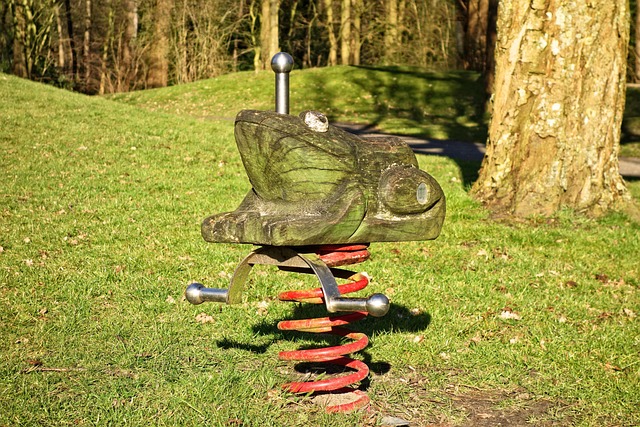Choosing Playground Equipment: Safe Swings, Slides, Climbers
Playground equipment shapes how children explore movement, solve problems, and build social skills. Thoughtful choices—right from swings and slides to climbing structures—balance fun with safety, accessibility, and durability. Whether you’re planning a schoolyard, park, or backyard play area, understanding materials, age-appropriate design, and installation considerations helps create engaging spaces that support healthy development and reduce injury risk.

How does playground equipment support play?
Well-designed playground equipment encourages physical, cognitive, and social development in children. Play elements like swings promote vestibular development and rhythm, while slides offer movement confidence and risk assessment practice. Equipment that incorporates sensory panels, balance beams, and varied textures invites imaginative play and fine motor challenges. Durable materials and age-appropriate heights let children try new skills within safe boundaries. When selecting equipment, look for signage or design features that indicate recommended ages and supervision guidelines, and consider how pieces work together to support different types of play.
What are safe swings options?
Swings are iconic but require careful selection for safety and longevity. Bucket seats and molded toddler swings are ideal for younger children because they limit slipping and distribute weight. For older children, belt or flat swings allow more freedom but need impact-absorbing surfacing beneath. Chains with protective coatings reduce pinching risks; stainless steel hardware resists corrosion in outdoor settings. Proper spacing between swings and around the swing set prevents collisions, and choosing units with rounded edges and enclosed bearings minimizes maintenance and injury potential. Regular inspections for wear and anchor stability are essential.
How to choose slides for different ages?
Slides vary by slope, height, and entry configuration to suit developmental stages. Short, gently sloped slides with high sidewalls are best for toddlers, providing secure seating and slower descent. Older children can use taller, steeper slides or tube slides that introduce speed and enclosed sensory experiences. Material matters: high-density polyethylene (HDPE) resists heat and fading, while metal slides can become hot in direct sun. Consider transfer platforms, handrails, and safe run-out zones with impact-attenuating surfacing. Matching slide complexity to supervision levels and the surrounding play layout improves both safety and enjoyment.
Why are climbing structures important?
Climbing structures build strength, coordination, spatial awareness, and problem-solving skills. Varied climbing challenges—nets, ladders, rock walls, and arc climbers—provide progressive difficulty so children can challenge themselves and set personal goals. Integrating platforms and resting nodes encourages peer interaction and imaginative play. Safety design includes appropriate fall heights, guardrails, and rounded edges; surfacing beneath must meet impact-attenuation standards for the maximum fall height. When planning a play area, distribute climbing components to avoid overcrowding and ensure sightlines for caregivers, and consider inclusive elements so children of differing abilities can participate.
How to design inclusive play for children?
Inclusive playground design ensures children of all abilities can engage together. Wide ramps, transfer platforms, sensory panels, ground-level play options, and accessible swings help children with mobility differences participate. Visual cues, tactile elements, and varied seating create sensory-rich experiences for neurodiverse children. Placement of equipment should allow caregivers and mobility devices to move easily through the space, and manufacturers often offer compliance information for accessibility standards. Inclusive design is not just about meeting regulations; it broadens social interaction and learning opportunities, making play a shared experience for the whole community.
Playground planning also involves practical considerations like materials, maintenance, warranties, and selecting reputable installers or local services who understand safety standards. Choose UV-resistant plastics and powder-coated metals for longer life and lower maintenance, and confirm that installation follows manufacturer instructions and relevant standards for surfacing and anchoring. Regular maintenance schedules—checking fasteners, replacing worn components, and maintaining impact-absorbing surfaces—extend lifespan and protect users. Engage caregivers and children in planning to align equipment selection with community needs and supervision patterns.
Conclusion
Selecting playground equipment requires balancing creativity, safety, accessibility, and durability. Thoughtful choices about swings, slides, climbing structures, and inclusive features support varied types of play and developmental benefits for children. Pay attention to materials, recommended ages, surfacing, and space layout to reduce risks while maximizing engagement. Partnering with knowledgeable local services for installation and committing to routine maintenance keeps play areas vibrant and safe over time. A well-considered playground becomes a long-term investment in child development, community connection, and joyful outdoor activity.






